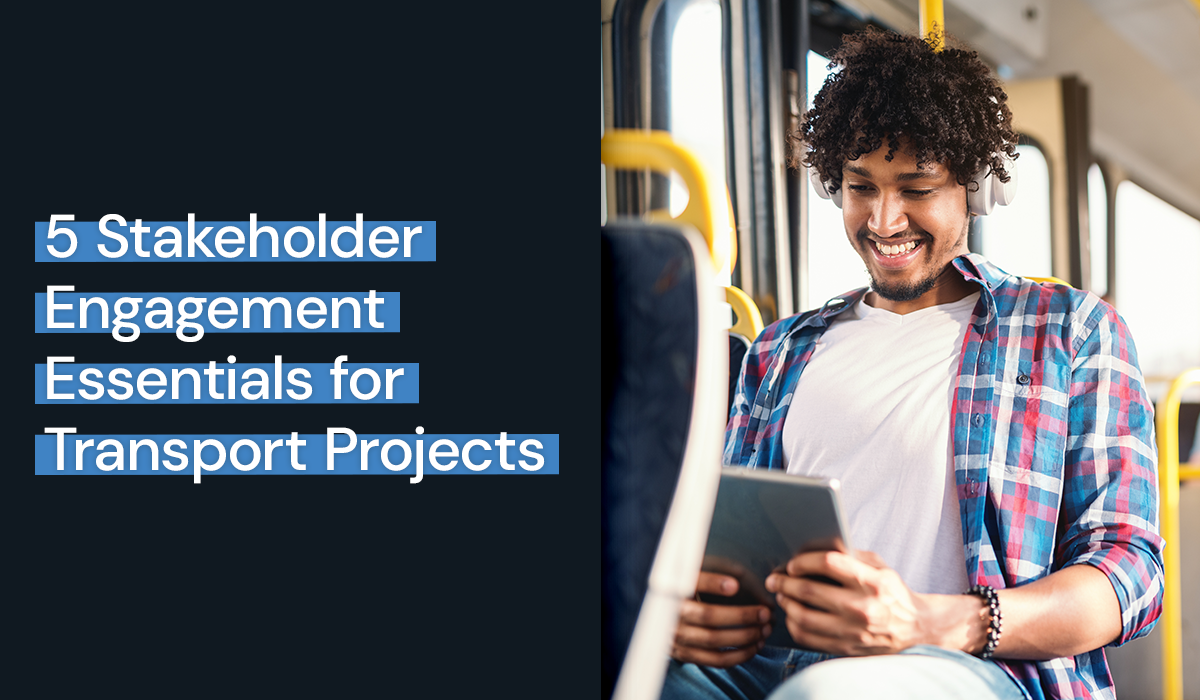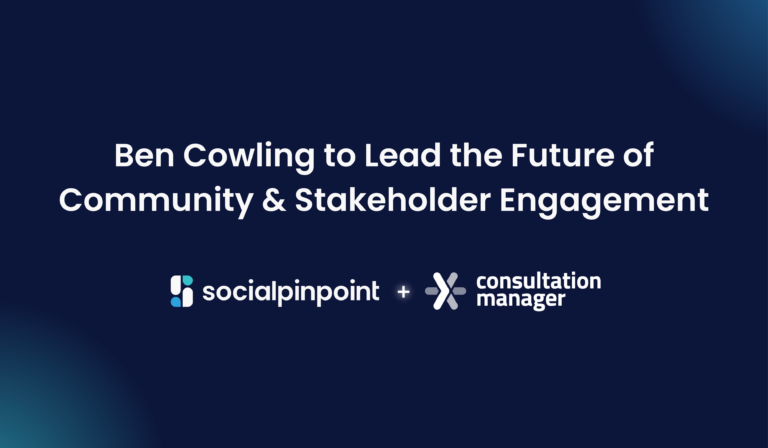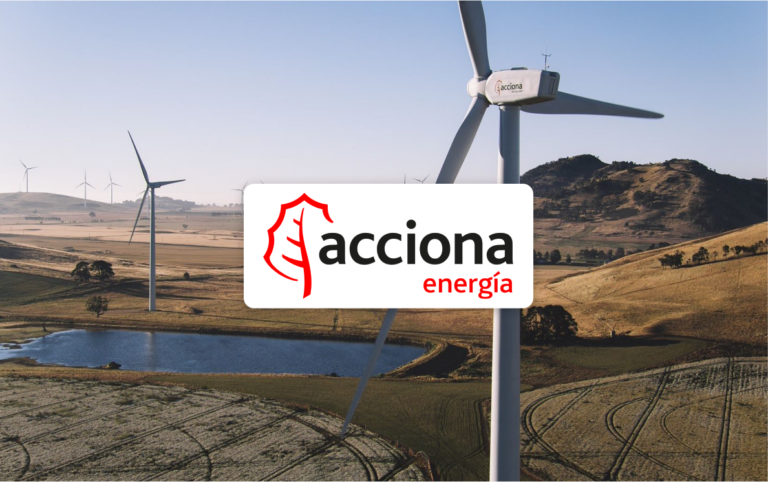From planning, to design, and delivery, effective stakeholder engagement truly adds value at every stage of a transport project. Capturing and incorporating community and stakeholder expertise, local knowledge, ideas, and feedback strengthens decision making. And, by understanding your stakeholders’ perceptions, you can truly raise the profile of transport projects and build community ownership of outcomes. Let’s explore the five essential considerations for stakeholder engagement in transport.
Picture a city that deals with increased traffic congestion and pollution due to an outdated transportation system. To address these concerns, the city’s transport authorities decide to develop a new public transit project.
But, instead of solely relying on technical expertise, they initiate a comprehensive stakeholder engagement process. This enables them to evaluate the social and environmental impacts and cater to transportation needs by collecting input from stakeholders and the community.
You see, when your stakeholders provide input about their needs and concerns, you are making sure that they are not only given a voice but they are heard. Engaging with stakeholders gives you valuable insights into people’s behaviour and perceptions. Whether this is travel behaviour, commuter experiences, or safety concerns, this helps you figure out your stakeholders’ preferences when you’re evaluating different options.
But what does an effective stakeholder engagement strategy involve? In this article, we will discuss our five essential steps for stakeholder engagement in transport. These steps involve engaging with stakeholders to promote a sustainable and inclusive future for transportation:
- Identify key stakeholders
- Gather diverse perspectives
- Consider any environmental or social impacts
- Actively listen to your stakeholders
- Integrate stakeholder input into your planning process
1. Identify key stakeholders
To ensure successful stakeholder engagement, begin by taking a look at your existing stakeholder data. Look for individuals, groups, or organisations that could be affected, either directly or indirectly, by your transportation process.
With this valuable stakeholder data at hand, you can then conduct a stakeholder analysis. The purpose of this analysis is to pinpoint and prioritise those stakeholders who possess a high level of interest or influence over your transportation project.
Remember to consider both internal and external stakeholders in your analysis. For instance, you might include local residents, businesses, public transportation users, community organisations, environmental groups, government agencies, and other relevant parties.
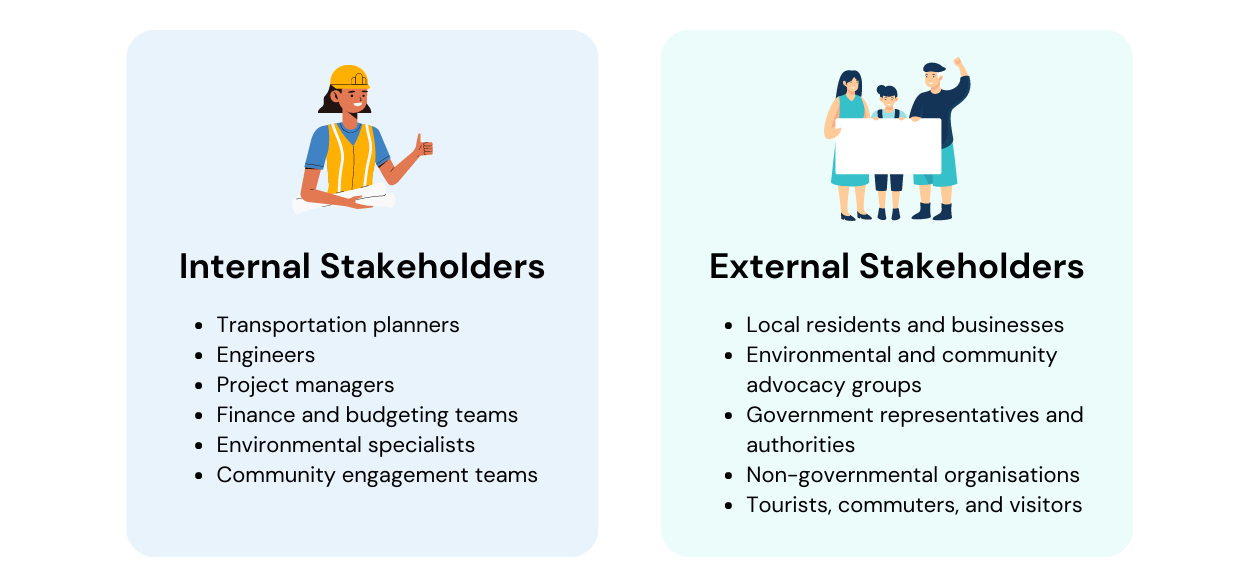
To help you with this process, you might also utilise a stakeholder relationship management platform (SRM) to effortlessly capture these relevant stakeholders.
With an SRM, you can easily capture stakeholder data and gain access to a history of your past interactions. By identifying key stakeholders from previous transport planning projects, you can determine whom you should be engaging with, along with their preferred communication channels, all in one centralised location.
2. Gather diverse perspectives
Once you have identified the key stakeholder groups for your project, you can begin to understand their unique perspectives and concerns. You see, by obtaining diverse viewpoints, you can gain a better understanding of their various interests and needs.
To engage effectively, you can utilise your SRM to help organise interactions and track communication. Both SMS and email tools can help keep your stakeholders in the loop and ensure you deliver the right message with confidence by segmenting your stakeholder groups.
Many organisations also leverage a dedicated community engagement platform to capture ongoing feedback from their community. Online participation tools such as participatory budgeting and interactive maps, empower individuals to engage beyond a simple survey or form. This also increases accessibility tenfold.
3. Consider any environmental and social impacts
Stakeholder engagement presents a chance to address and evaluate the potential environmental and social impacts of transport projects. This is because each stakeholder group may have distinct concerns and perspectives related to your project.
For instance, environmental groups may bring up concerns about air quality, noise pollution, habitat disruption, and other ecological issues. While local communities may express their opinions on how a transportation project might affect their quality of life, access to essential services, or historical and cultural heritage.
With Consultation Manager’s ‘issues-over-time’ reporting feature, you can see a summary of all the reported issues recorded for each month. By taking these insights into account, planners can design more sustainable and community-friendly transportation solutions.
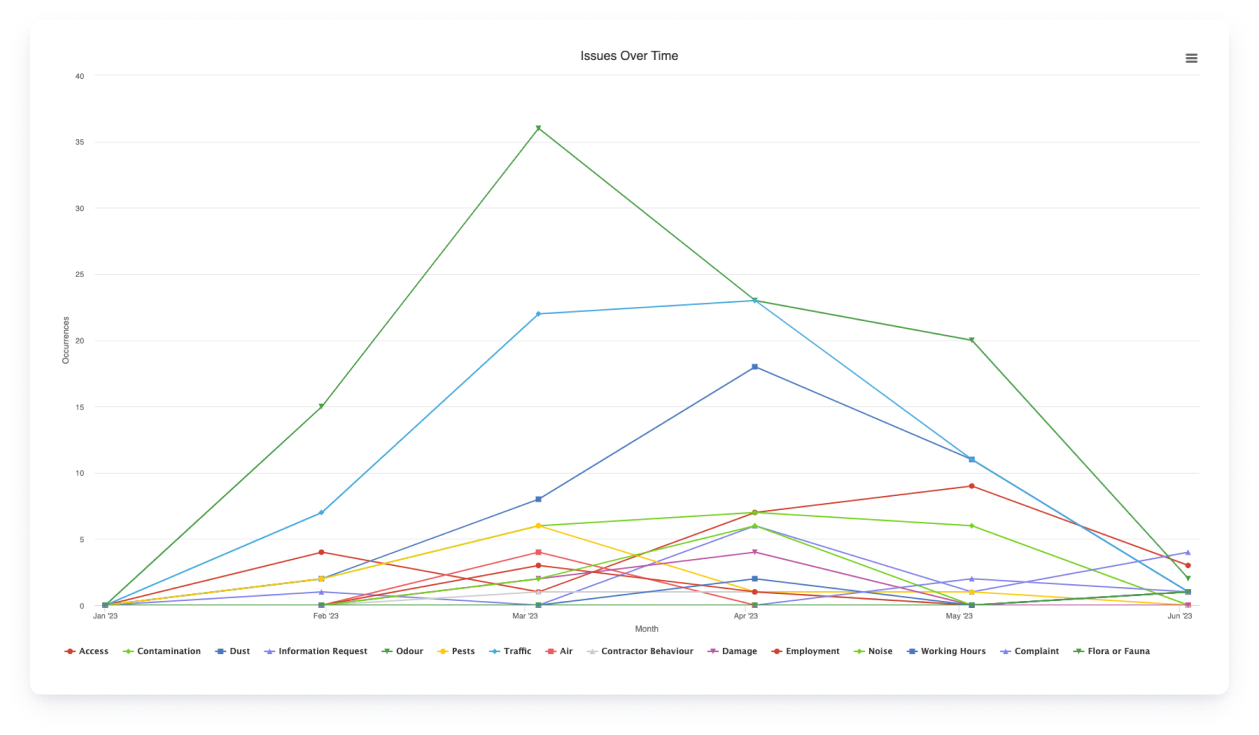
4. Actively listen to your stakeholders
Actively listening to stakeholders is crucial in stakeholder engagement. It creates a welcoming environment where they can freely share their thoughts and concerns. This is vital for building trust and fostering positive relationships throughout the planning process.
When stakeholders are involved early on and feel their input is valued. And, they are more likely to support the final decisions and outcomes, contributing to the project’s overall success. By listening and valuing input, planners can create an inclusive approach to projects.
An SRM is essential for proactive risk mitigation as it aids in recording and analysing consultations. It also enables proactive monitoring of conflict management, sentiment, and emerging issues throughout your project lifecycle. This comprehensive understanding facilitates early identification of potential conflicts and risks. Your team can efficiently respond to rising concerns, and address these before they escalate.
5. Integrate stakeholder input into the planning process
It is essential for people to be aware of the level of impact they can have on a project. If stakeholders provide feedback, but no changes occur, it can lead to increased outrage and pressure. This emphasises the importance of open communication and utilising effective communication strategies to engage key stakeholders and provide updates throughout the project lifecycle.
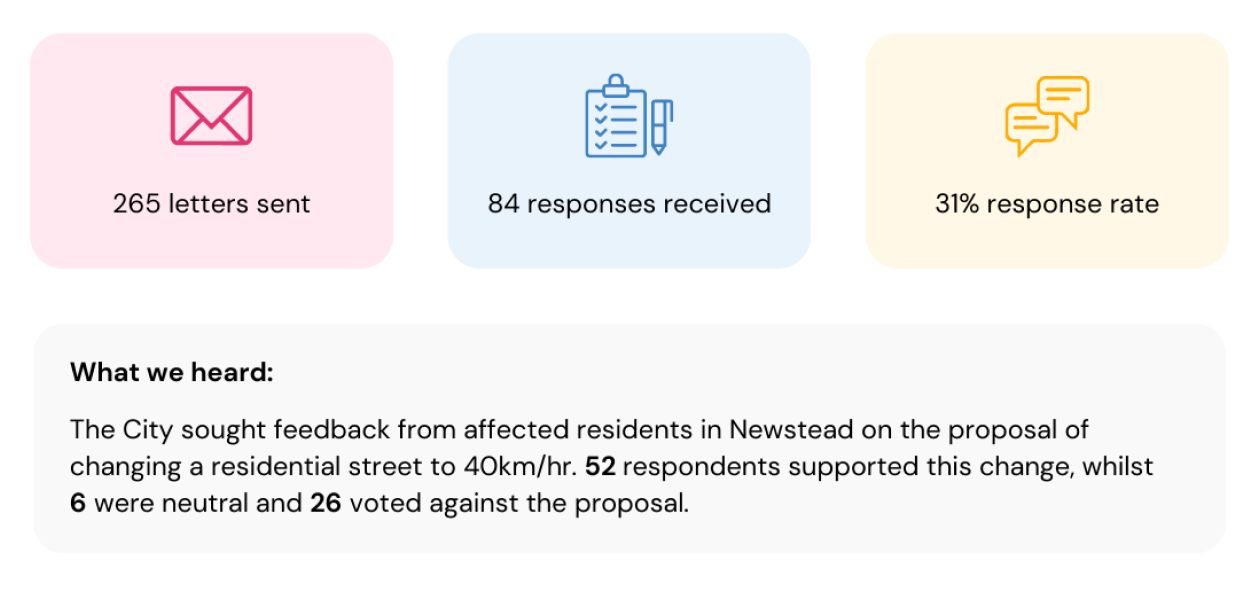
Once stakeholders are actively involved, integrating their perspectives and feedback becomes crucial in transportation planning. Utilising their valuable input helps make informed decisions, assess various alternatives, and shape the final design of the transportation project.
With the help of an SRM, comprehensive reports summarising stakeholder feedback and corresponding actions taken can be generated and shared publicly, promoting transparency and accountability in the decision-making process.
Embracing stakeholder engagement throughout the planning phases allows for proactive identification and addressing of potential issues and risks, leading to a smoother and more successful implementation of the transport project, which is likely to be better received by the community.
So, by incorporating effective stakeholder engagement into your transport planning, it can ensure that planners are acknowledging and valuing a wide range of perspectives among diverse stakeholders. In turn, you can work more closely together to develop transportation solutions that are both sustainable and responsive to the needs of the communities they serve.
By having an engagement plan of actively involving stakeholders throughout your planning process, transportation projects can become more successful, widely accepted, and better aligned with the overall goals of society.

